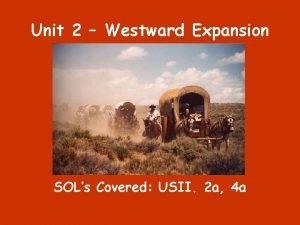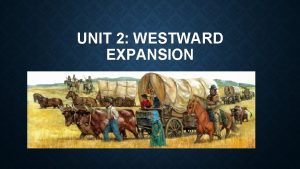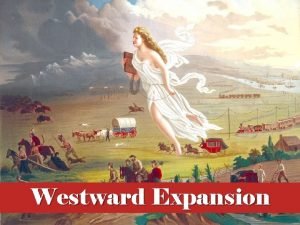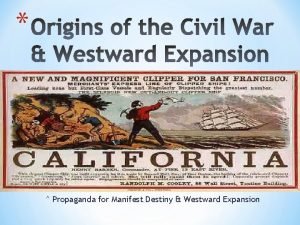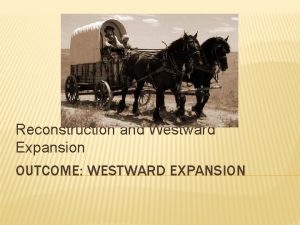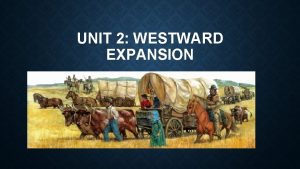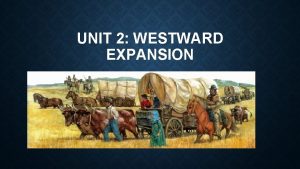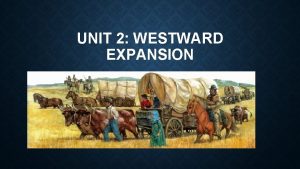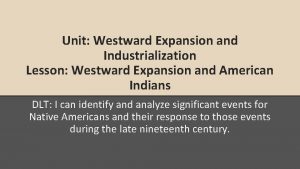UNIT 2 WESTWARD EXPANSION STANDARDS Analyze the geographic








- Slides: 8

UNIT 2: WESTWARD EXPANSION

STANDARDS Analyze the geographic and economic factors that influenced westward expansion and the ways that these factors affected travel and settlement, including physical features 5 -2. 1 of the land; the climate and natural resources; and land ownership and other economic opportunities. Summarize how technologies (such as railroads, the steel plow and barbed wire), federal 5 -2. 2 policies (such as subsidies for the railroads and the Homestead Act), and access to natural resources affected the development of the West. Identify examples of conflict and cooperation between occupational and ethnic groups in 5 -2. 3 the West, including miners, farmers, ranchers, cowboys, Mexican and African Americans, and European and Asian Immigrants. Explain the social and economic effects of westward expansion on Native Americans; including opposing views on land ownership, Native American displacement, the impact of 5 -2. 4 the railroad on the culture of the Plains Indians, armed conflict, and changes in federal policy.

ESSENTIAL QUESTION • When it comes to Westward Expansion, in what ways can change, progress, and growth be both positive and negative?

COWBOYS AND RANCHERS • Cattle raised in the west provided beef for people living in the growing eastern cities. • At the end of the Civil War, millions of cattle grazed freely across the open Texas plains. The land was better suited for ranching than farming. • But there was one problem. How could ranchers get their cattle to market?


COWBOYS AND RANCHERS • In 1867, the Kansas Pacific Railroad helped to solve this problem. The company built a rail line to Abilene, Kansas. • After that, cowboys guided huge herds of cattle to Kansas. • They sold the cattle to buyers from the East, who shipped the herds on the railroad to meatpacking plants in Chicago and eastern cities.

COWBOYS AND RANCHERS • By the 1880 s, waves of settlers pushed farther west across the plains, setting up farms. • Meanwhile, the new Santa Fe Railroad helped ranches expand farther west. • Soon farmers and ranchers were competing fiercely for land in the Southwest.


